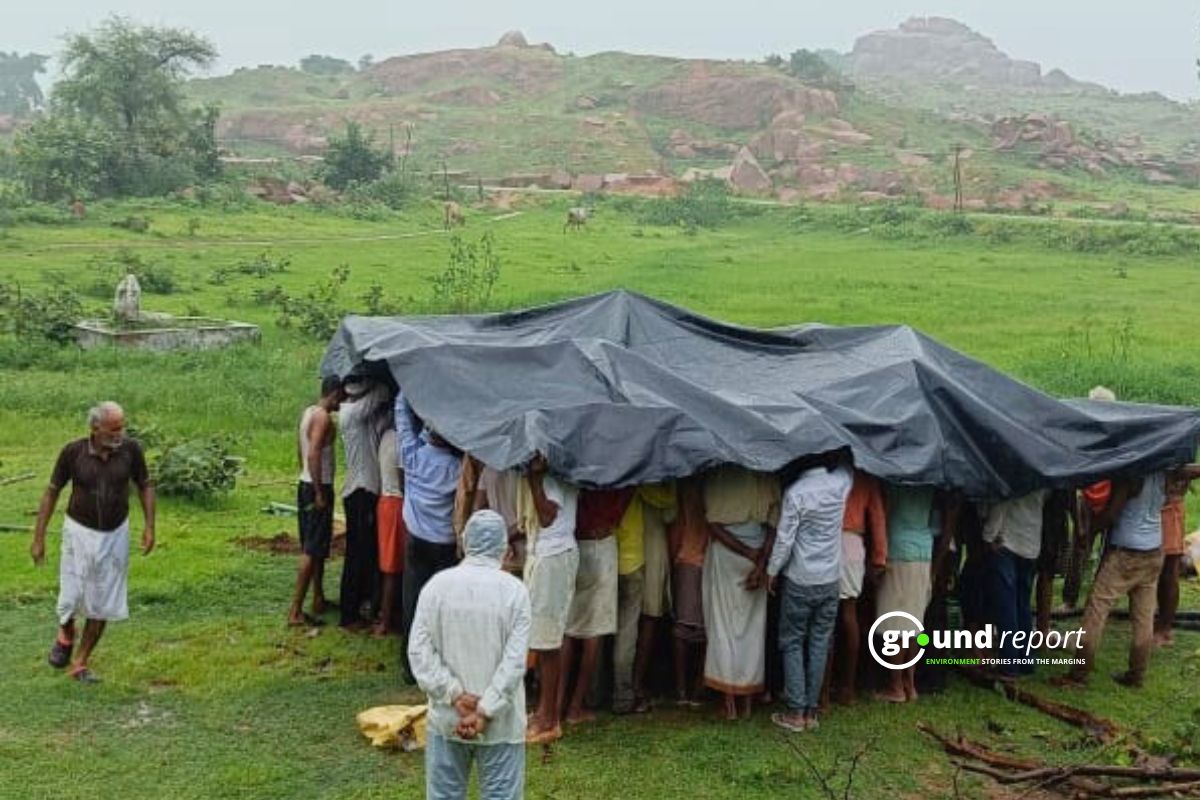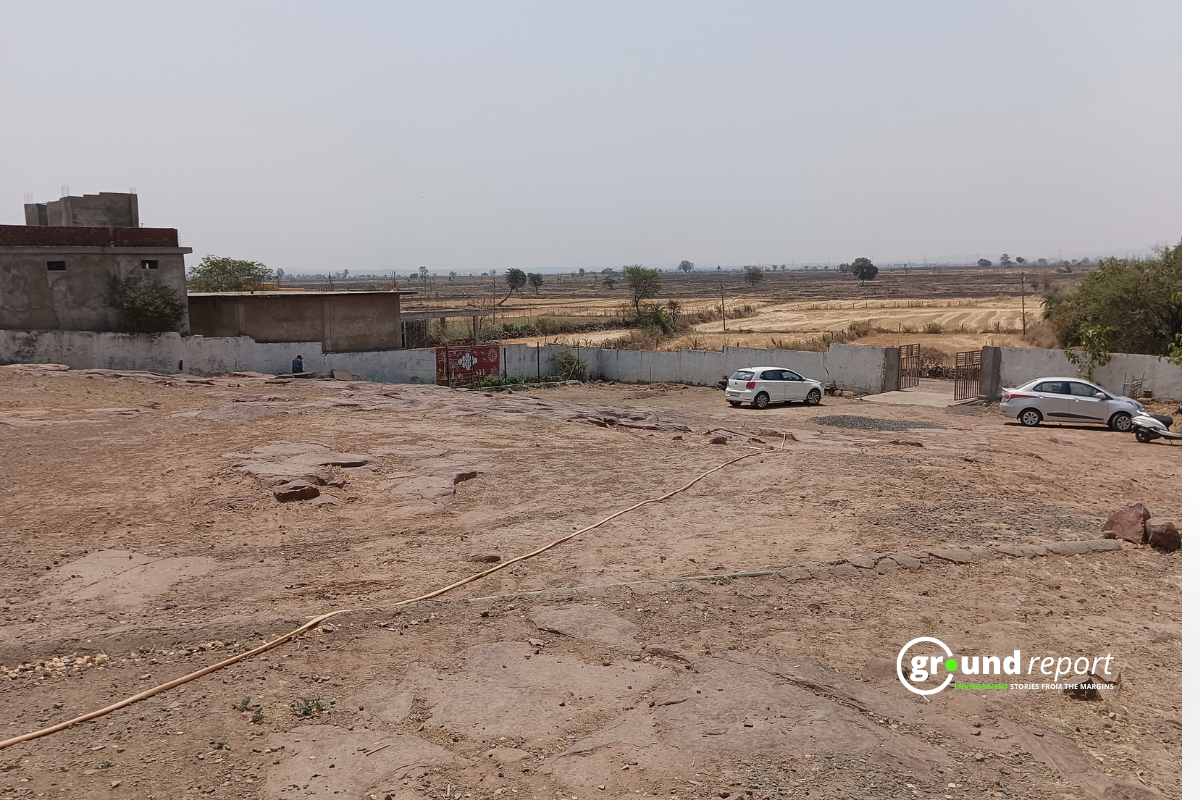The village of Podampeta in Odisha is facing coastal erosion due to rising sea levels and climate change, which has led to the loss of more than 100 homes since 2007.
Coastal erosion forces village relocation
More than 500 families have left the village, leaving only 11 people belonging to the two remaining families. Most of the houses have been knocked down by the waves and the rest have been abandoned.
The state government has been relocating residents to a colony 5 km away, providing them with a 300 square-foot house with one bedroom, kitchen and bathroom under the Odisha Disaster Recovery Project.
However, the houses are too small to accommodate large families and expanding them requires buying land and investing in construction. Some families refuse to move, emotionally attached to their homes despite the danger.
Jami Nacheya, 68, and her family are among the few remaining residents of Podampeta, as two of her children received houses in the ODRP neighbourhood. She told The Indian Express, that she prefers to stay in Podampeta, as it is closer to the sea, making it easier to venture out early in the morning. Meanwhile, in the colonia, people queue up at the common services center for help with their documents and struggle to find work.
The state government has sanctioned a Rs 73-lakh plan to develop a seawall using geotextile tubes to control coastal erosion, according to Ganjam tahsildar Arun Kumar Nayak. However, it is not clear if the wall can stop erosion caused by rising sea levels.
Resistance to relocation due to emotional attachment
Chandragiri Paindi, a 40-year-old mother of five, stated: “We will not leave the village until the sea enters our house. We poured all our savings into building this house. Government officials pressure us to move to the rehabilitation colony. We are emotionally attached to this house. We will not abandon it.”
Podampeta, once teeming with life, is now deserted, its sandy paths overgrown with trees and shrubs. The houses, now in ruins, serve as homes for stray dogs, abandoned cattle and pigeons. The haunting emptiness of the town is a reminder of the harsh reality that coastal erosion caused by climate change has devastating consequences for people’s lives and livelihoods.
Last month, Pradip Kumar Amat, Odisha’s Minister of Forests and Environment, provided a written response in the state Assembly stating that families from Podampeta and Ramayapatna village in Ganjam district have been relocated to safer areas due to erosion.
The minister also mentioned that climate change has led to rising sea levels and coastal erosion, which has led to the subsidence of 16 villages in the Kendrapara district.
Climate change impacts Odisha’s coast
The Odisha Department of Forest and Environment’s climate change action plan reveals that of the state’s 480 km coastline, almost 187 km are exposed to erosion and are considered stable, while 39.3 km are classified as areas of high erosion and 51.96 kilometres are areas of medium erosion.
The plan emphasizes that Odisha is particularly vulnerable to the impacts of climate change, such as rising sea levels and increasing storm intensity, resulting in the loss of land towards the sea, which has become a most frequent and recurrent phenomenon.
According to a 2021 study published in the Journal of Earth System Science on ‘Shoreline change along the Odisha coastline‘, coastal structures such as seawalls, breakwaters and jetties modify the morphology of the shoreline and beach.
The study also indicates that hard structures along the coast for port development significantly modify the shoreline.
Odisha is more susceptible to cyclones than other coastal areas in India. In the last 12 years, the state has faced ten cyclones.
Prabin Kumar Kar, the study’s first author and project scientist at the University of Berhampur said that most of the rivers in Odisha flow into the Bay of Bengal, as opposed to the Arabian Sea.
The river flow in the region of the river mouth acts as a barrier to ocean currents and causes erosion in the areas located in the northern part of the river channel. Both Podampeta and Ramayapatna are situated on the northern part of the Rushikulya and Bahuda rivers, respectively.
Govt’s rehabilitation measures for coastal erosion
The central government has developed plans to rehabilitate those who may be affected by rising sea levels. A draft NDMA policy aims to address extensive displacement caused by coastal and river erosion.
The 15th Finance Commission has recommended the creation of National and State Disaster Risk Management Funds to prevent erosion and resettle affected people. Union Minister Dr. Jitendra Singh shared this information in a written reply to the Rajya Sabha.
The National Center for Coastal Research (NCCR) in Chennai, which is affiliated with the Ministry of Earth Sciences (MoES), has been using remote sensing data and GIS mapping techniques to monitor coastal erosion since 1990.
They have analyzed the 6,907.18 km long coastline for the period between 1990 and 2018, and found that 33.6% of the coastline is experiencing varying degrees of erosion, 26.9% is accumulating and the remaining 39.5% is found stable.
Keep Reading
Part 1: Cloudburst in Ganderbal’s Padabal village & unfulfilled promises
India braces for intense 2024 monsoon amid recent deadly weather trends
Support us to keep independent environmental journalism alive in India.
Follow Ground Report on X, Instagram and Facebook for environmental and underreported stories from the margins. Give us feedback on our email id greport2018@gmail.com.
Don’t forget to Subscribe to our weekly newsletter, Join our community on WhatsApp, and Follow our YouTube Channel for video stories.









